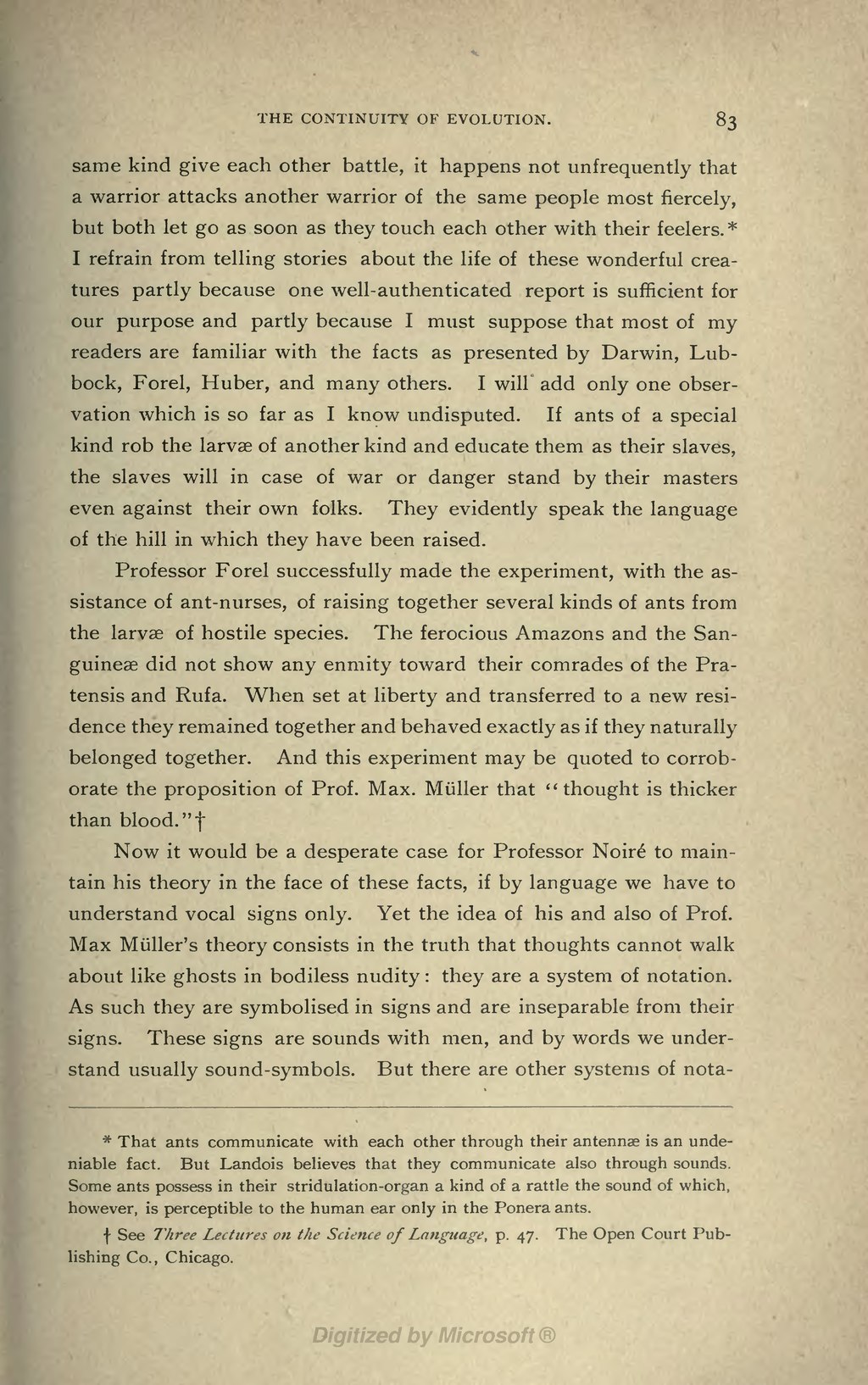same kind give each other battle, it happens not unfrequently that a warrior attacks another warrior of the same people most fiercely, but both let go as soon as they touch each other with their feelers.[1] I refrain from telling stories about the life of these wonderful creatures partly because one well-authenticated report is sufficient for our purpose and partly because I must suppose that most of my readers are familiar with the facts as presented by Darwin, Lubbock, Forel, Huber, and many others. I will add only one observation which is so far as I know undisputed. If ants of a special kind rob the larvae of another kind and educate them as their slaves, the slaves will in case of war or danger stand by their masters even against their own folks. They evidently speak the language of the hill in which they have been raised.
Professor Forel successfully made the experiment, with the assistance of ant-nurses, of raising together several kinds of ants from the larvæ of hostile species. The ferocious Amazons and the Sanguineæ did not show any enmity toward their comrades of the Pratensis and Rufa. When set at liberty and transferred to a new residence they remained together and behaved exactly as if they naturally belonged together. And this experiment may be quoted to corroborate the proposition of Prof. Max. Müller that "thought is thicker than blood."[2]
Now it would be a desperate case for Professor Noiré to maintain his theory in the face of these facts, if by language we have to understand vocal signs only. Yet the idea of his and also of Prof. Max Müller's theory consists in the truth that thoughts cannot walk about like ghosts in bodiless nudity: they are a system of notation. As such they are symbolised in signs and are inseparable from their signs. These signs are sounds with men, and by words we understand usually sound-symbols. But there are other systems of nota-
- ↑ That ants communicate with each other through their antennæ is an undeniable fact. But Landois believes that they communicate also through sounds. Some ants possess in their stridulation-organ a kind of a rattle the sound of which, however, is perceptible to the human ear only in the Ponera ants.
- ↑ See Three Lectures on the Science of Language, p. 47. The Open Court Publishing Co., Chicago.
